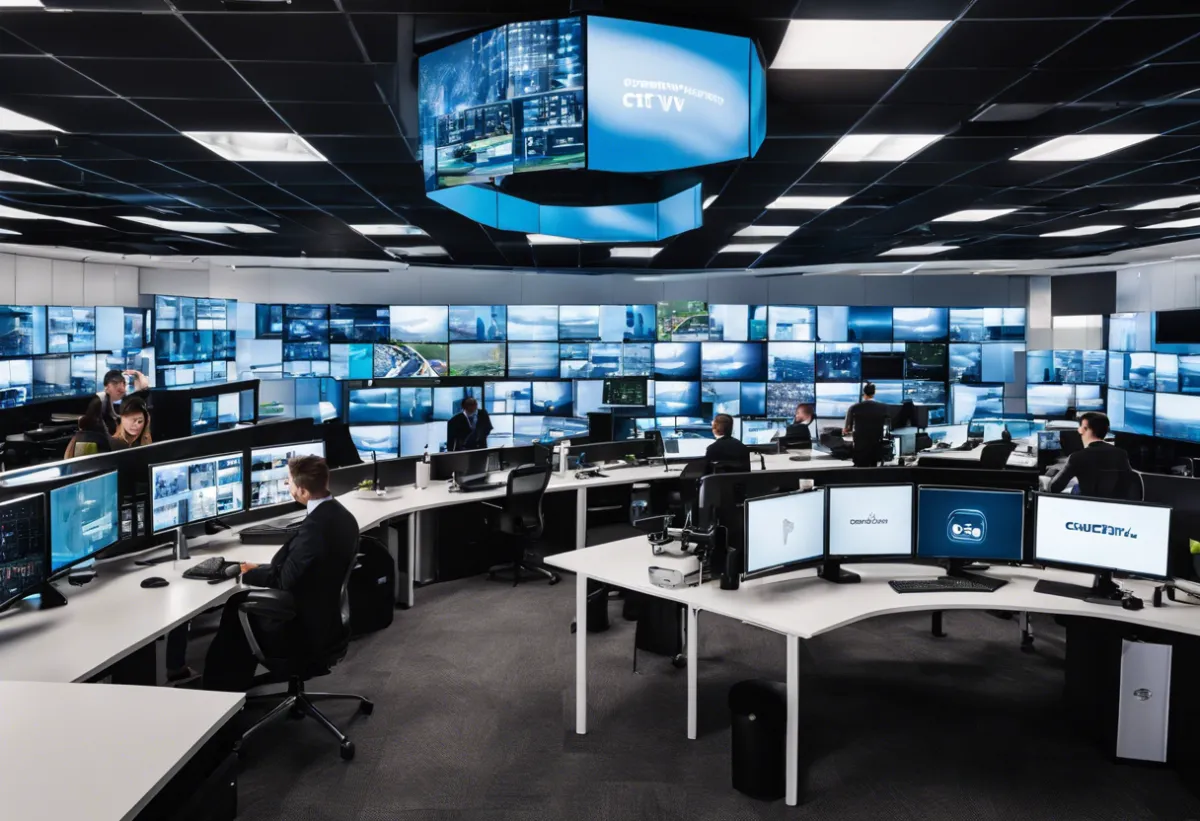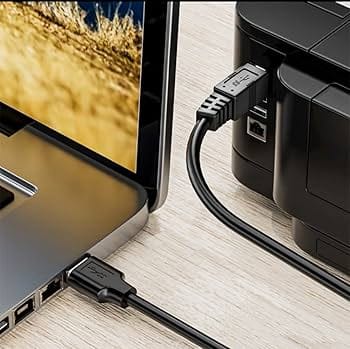The Evolution of Business Security: Embracing Cloud CCTV Solutions

Introduction to Business Security and Technological Advancements
In the ever-evolving landscape of modern business, security stands as a paramount concern. With the proliferation of digital technology, companies are increasingly transitioning from traditional security systems to more sophisticated, technology-driven solutions. This movement is largely propelled by the desire for enhanced protection, scalability, and cost-effectiveness.
Advanced security systems, utilizing the latest in technology, offer businesses a range of features that were once considered futuristic. For example:
- Integrated Surveillance: Combining physical and cybersecurity measures for comprehensive protection.
- Real-time Monitoring: Utilizing cloud-based CCTV solutions that allow for live streaming and instant access to footage from any internet-connected device.
- Data Analytics: Applying artificial intelligence and machine learning algorithms to analyze surveillance data and detect anomalies.
The shift towards such systems is exemplified by the widespread adoption of cloud Closed-Circuit Television (CCTV) solutions. These systems exemplify the marriage of technological advancements with security needs, offering:
- Off-site data storage that is both secure and easily retrievable.
- Scalability, allowing businesses to expand their surveillance capabilities without extensive hardware investments.
- Accessibility, with remote monitoring capabilities that enable security personnel to maintain vigilance from anywhere.
In this context, business security is no longer just about locking doors and installing alarms. It now encompasses a sophisticated blend of hardware, software, and connectivity to ensure assets, both physical and digital, are robustly protected against an array of threats. The evolution of these security measures is testimony to technology’s role as a critical ally in safeguarding business interests in a globalized economy.
Traditional Security Systems vs. Modern Innovations
In the realm of business security, the distinction between traditional mechanisms and modern innovations is starkly pronounced. Traditional security systems often encompass analog CCTV cameras, which relay footage to a local recording device. These units were characterized by:
- Limited Accessibility: Footage could typically only be viewed on-site.
- Physical Storage Limitations: Reliance on tapes or hard drives that had finite capacities and could degrade over time.
- Lower Resolution: Image quality was not always sufficient for clear identification.
- Wired Setup: Often required complex wiring systems that were vulnerable to tampering or damage.
- Passive Security: They functioned more as a post-event review tool rather than a proactive security measure.
Modern innovations, with cloud CCTV solutions at the forefront, have revolutionized business security by addressing the pitfalls of their predecessors through:
- Remote Accessibility: Users can monitor live and recorded footage from any location via the internet.
- Scalable Cloud Storage: Offers virtually unlimited storage capacity and resilience against data loss.
- High-Definition Video: Improved video resolution for better identification and analysis.
- Wireless Technology: Minimizes physical vulnerabilities and allows for flexible installation.
- Active Monitoring and Alerts: Integration of artificial intelligence for real-time threat detection and alerts.
The transformation brought by these advancements offers businesses a dynamic and robust approach to security. Where traditional systems act as a deterrent and a means to document incidents, modern cloud-based solutions offer comprehensive surveillance and proactive threat mitigation, signaling a substantial leap forward in protecting assets and ensuring business continuity.
Understanding Cloud CCTV: Definition and Mechanics
Cloud-based Closed-Circuit Television (Cloud CCTV) systems represent a significant leap in business security technology. They function by transmitting video and audio captured by cameras directly to a cloud storage service. This approach contrasts with traditional CCTV setups, which typically require local storage and dedicated hardware.
Definition
A Cloud CCTV system incorporates cameras capable of sending footage over the internet. Unlike traditional systems, there is no need for onsite storage such as DVRs (Digital Video Recorders) or NVRs (Network Video Recorders). Instead, data is stored remotely on servers maintained by cloud service providers.
Mechanics
The mechanics of a Cloud CCTV system involves several key components and processes:
- Cameras: High-definition cameras are installed at strategic points. These devices are equipped with internet connectivity, allowing them to send data directly to the cloud.
- Connectivity: A robust internet connection is crucial. Cameras transmit data using either wired Ethernet connections or wirelessly via Wi-Fi or cellular networks.
- Cloud Storage: Video footage is stored offsite in the cloud, alleviating concerns about physical damage to local storage media or capacity limitations.
- Data Encryption and Security: Data is encrypted during transmission and when stored in the cloud, providing an additional layer of security.
- Access and Management: Users can access live streams and recorded footage from anywhere, at any time, and on any device with internet access, through a secure client portal.
- Software Integration: Cloud CCTV often integrates with other business systems for enhanced functionality, such as advanced analytics, motion detection, and automated alerting.
Cloud CCTV systems epitomize modern security by offering scalable, flexible, and remotely accessible solutions that suit a diverse array of business settings. Enterprises are adopting these systems at an accelerating rate given their meticulous design that effectively combines convenience with high-level security.
The Rise of Cloud-Based Surveillance in Business Security
The domain of business security has witnessed a transformative shift with the integration of cloud-based surveillance technologies. These sophisticated systems have gained momentum primarily due to their scalability, remote accessibility, and cost-efficiency.
Cloud-based surveillance, also known as Cloud CCTV (Closed-circuit television), represents a significant leap from traditional video security systems. The data captured by cameras is not stored on physical recording devices onsite but is uploaded and kept on secure cloud servers. This evolution negates the need for substantial hardware investments and circumvents the limitations of local storage capacity.
- Scalability is a hallmark of cloud-based systems. Businesses of any size can easily adjust their storage needs, add or remove cameras, or enhance resolution without overhauling the entire infrastructure. This adaptability makes the technology appealing to both small enterprises and expansive corporations alike.
- One of the primary advantages is the ability to access surveillance footage from anywhere, at any time. Business owners, security personnel, or authorized individuals can securely log in to view live or recorded video through any internet-connected device. This remote access bolsters security management and expedites response times to incidents.
- Cloud surveillance also boasts advanced features, such as intelligent video analytics, which can provide valuable insights into customer behavior, operational efficiency, and even help in deterring crime through real-time alerts.
- Cost concerns, often detrimental to the adoption of advanced technologies, are mitigated by cloud solutions. They typically involve a subscription-based model, which can be more budget-friendly than the capital expenditure required for traditional systems.
Furthermore, cloud-based surveillance dovetails with concerns about cybersecurity. Service providers constantly update their systems to counteract emerging security threats, offering businesses a level of protection that might be hard to maintain with in-house resources.
In essence, the rise of cloud-based surveillance marks an era where business security is no longer constrained by physical boundaries, enabling a dynamic and proactive approach to safeguarding assets and premises.
How Cloud CCTV is Revolutionizing Security Management
Cloud-based Closed-Circuit Television (CCTV) technology is transforming the field of security management, offering businesses a more flexible, scalable, and efficient way to monitor their operations. Unlike traditional CCTV systems that are confined to on-site hardware and storage, cloud CCTV systems leverage the power of the internet to store and manage video footage remotely.
The benefits of cloud CCTV for security management are manifold:
- Remote Accessibility: One of the most significant advantages of cloud-based CCTV systems is the ability to remotely access real-time and recorded footage from anywhere in the world, provided there is internet connectivity. This accessibility empowers security managers to maintain vigilance over their business premises without needing to be physically present.
- Scalability: Cloud CCTV solutions enable businesses to easily expand their surveillance capabilities. Additional cameras can be integrated into the system without substantial investment in local storage infrastructure, making it ideal for growing businesses.
- Enhanced Security: With data encryption and advanced cybersecurity measures, cloud CCTV platforms provide a secure method of storing sensitive surveillance footage. This reduces the risk of data theft or tampering that can be prevalent with physical storage systems.
- Cost-Effectiveness: Eliminating the need for local servers and storage significantly reduces up-front capital expenditures and ongoing maintenance costs. Cloud CCTV employs a subscription model, meaning businesses can tailor the service to their needs and budget.
- Integration and Intelligence: Cloud CCTV systems often come with advanced analytics and artificial intelligence capabilities. These can automatically detect suspicious activities, manage crowd control, and even predict potential security breaches before they occur.
- Reliability and Redundancy: Traditional surveillance systems can suffer from footage loss due to hardware failure. Cloud solutions generally provide robust backup and disaster recovery options to ensure data integrity.
The evolution to cloud CCTV is more than a trend—it is a paradigm shift in how organizations approach their security infrastructure. By embracing these innovative solutions, businesses are setting a new standard in protecting their assets, employees, and customers.
The Advantages of Cloud CCTV over Traditional Security Cameras
Traditional security cameras have served businesses well for years, but with technological advancements, Cloud CCTV systems have emerged as a more powerful and versatile security solution. The advantages of Cloud CCTV are numerous when compared to their traditional counterparts.
- Accessibility: One of the key benefits of Cloud CCTV is the ability to access footage from anywhere at any time. Unlike traditional systems that require physical presence to view recordings, cloud-based cameras can be accessed through any internet-connected device, offering greater flexibility.
- Storage and Scalability: Traditional cameras often rely on on-site storage solutions, which can be limited in space and more susceptible to damage. Cloud CCTV, on the other hand, stores footage securely off-site, with scalable options to increase storage space as needed, without the need for physical hardware upgrades.
- Cost-Effectiveness: Cloud CCTV systems can be more cost-effective over the long term. They generally require less upfront investment in hardware and infrastructure, and maintenance costs are typically lower due to less physical equipment.
- Enhanced Security: With Cloud CCTV, footage is encrypted and backed up on remote servers. This means that the data is protected against theft, tampering, and natural disasters, ensuring that businesses have continuous access to their security footage.
- Advanced Features: Many cloud-based cameras come with advanced features like motion detection, automatic alerts, facial recognition, and easy integration with other security systems. This allows for a more proactive approach to security, rather than the reactive nature of traditional systems.
- Automatic Updates: Cloud CCTV systems benefit from automatic software updates, ensuring the latest security features and improvements are implemented without any inconvenience to the business.
By utilizing cloud technology for video surveillance, businesses can not only enhance their security measures but also benefit from increased flexibility, scalability, and cost savings, making Cloud CCTV a smart choice for modern security needs.
Integrating Cloud CCTV with Other Security Measures
Integrating Cloud CCTV into a business’s existing security infrastructure marks a significant step towards a comprehensive security strategy. By incorporating Cloud CCTV with other security measures, businesses can ensure a multi-layered defense system that covers more ground and offers more robust protection.
- Access Control Systems: Pairing Cloud CCTV with electronic access control systems allows for synchronized monitoring and logging of entries and exits. Visual verification complements access data, thereby enhancing the security of sensitive areas within a business premise.
- Intruder Alarms: Integration with intruder alarm systems means that alarms can trigger cameras to focus on the area of disturbance. This facilitates an immediate visual assessment which can be vital for a quick response.
- Fire and Safety Alarms: In the event of a fire or safety alarm being triggered, Cloud CCTV can provide real-time imagery to first responders. Accurate assessment of the situation helps in deploying the necessary resources effectively.
Furthermore, Cloud CCTV systems have the capability to harness the potential of Artificial Intelligence (AI) for advanced anomaly detection. By using AI, the system can identify unusual behaviors or events and prompt further investigation or immediate action.
- Video Analytics: AI-driven video analytics can provide valuable insights such as people counting, heat mapping, and loitering detection. This can be valuable for not only security purposes but also for business intelligence.
- Mobile Notifications: Modern Cloud CCTV systems allow security personnel to receive alerts directly on their smartphones. With mobile integration, personnel can remotely view live feeds, review recordings, and take necessary actions from anywhere at any time.
To sum up, the seamless integration of Cloud CCTV with other security measures results in a fortified security system. It provides businesses with a more comprehensive approach to mitigating risks and responding to incidents in a timely and effective manner.
Data Protection and Privacy Concerns in Cloud-Based Surveillance
As businesses transition to cloud-based CCTV solutions, they carry with them an increased responsibility for safeguarding the collection, storage, and usage of surveillance data to honor privacy rights and comply with data protection regulations. The very nature of surveillance data—often personal and sensitive—necessitates stringent controls to deter unauthorized access and breaches.
Implementing a cloud-based surveillance system involves several key considerations concerning data protection and privacy:
- Data Encryption: Surveillance data, during transmission and at rest, should be encrypted to prevent unauthorized interception and access. Advanced encryption standards such as AES (Advanced Encryption Standard) are pivotal for securing data against hacking attempts.
- Access Controls: Businesses must ensure rigorous access controls. Role-based access to surveillance footage ensures that only authorized personnel with explicit needs can view or manipulate the data.
- Regulatory Compliance: Organizations must navigate a complex landscape of privacy laws such as the GDPR (General Data Protection Regulation) and CCPA (California Consumer Privacy Act). These regulations demand consent procedures for data collection and stipulate rights to data access and erasure.
- Data Residency: Data residency laws, which govern where data can be stored and processed, must be adhered to. Cloud service providers should offer regional storage options to comply with national data sovereignty laws.
- Vendor Security: The security measures and protocols that the cloud service provider has in place are critical. Vetting their security certifications (e.g., ISO 27001, SOC 2) and their adherence to industry-standard practices should be non-negotiable for businesses seeking cloud surveillance solutions.
- Data Retention Policies: Establishing clear data retention policies that align with legal requirements and privacy principles helps mitigate the risk of data hoarding and potential abuse.
- Incident Response Plan: A robust incident response plan that includes immediate action steps, notification procedures to authorities and affected individuals, and post-incident analysis is vital for mitigating damages in the event of a breach.
These concerns indicate that while cloud CCTV brings innovation and scalability to business security, it simultaneously demands a heightened vigilance towards data protection and privacy practices to maintain consumer trust and regulatory approval.
Cost-Benefit Analysis of Cloud CCTV Solutions for Businesses
When considering the implementation of cloud-based CCTV solutions for business security, it is essential to undertake a detailed cost-benefit analysis. This analytical process helps to determine the value derived from the investment relative to the cost of adoption and operation.
Costs of Cloud CCTV Solutions
The costs involved in cloud CCTV often include:
- Initial Setup Costs: Including the purchase of cameras, installation, and the setup of cloud storage infrastructure.
- Monthly Subscription Fees: Most cloud CCTV solutions operate on a subscription model, charging businesses a regular fee for cloud storage and access to advanced features.
- Maintenance and Upgrade Expenses: While typically reduced due to the outsourced nature of cloud services, maintenance costs remain a factor, covering potential hardware issues and software updates.
Benefits of Cloud CCTV Solutions
On the benefits side, businesses experience:
- Enhanced Security and Surveillance: Constant access to video feeds and offsite storage make cloud CCTV highly effective at monitoring and incident response.
- Scalability: The ability to easily add more cameras or storage space without significant infrastructure changes stands out as a key advantage.
- Accessibility: Remote access to surveillance footage from any internet-connected device is a definite plus.
- Reduced Onsite Storage Needs: Because video is stored in the cloud, businesses save on the costs associated with onsite data storage solutions.
- Potential Insurance Discounts: Some insurers offer premium discounts for businesses employing advanced security systems.
Net Benefit Consideration
Businesses must weigh these initial and recurring costs against the benefits gained to determine the net benefit of adopting a cloud CCTV solution. In many cases, the long-term savings on security staffing, loss prevention, and risk mitigation can substantively outweigh the investment costs, leading to a positive return on investment over time. However, this balance can vary greatly depending on a business’s specific security needs, scale, and the chosen cloud CCTV provider.
Future Trends in Cloud CCTV and AI-Driven Security
As business security continues to evolve, the integration of cloud-based CCTV (Closed-Circuit Television) and AI-driven technologies stands at the forefront of this transformation, signaling a new era of monitoring and protective measures.
- Advanced Analytics and Machine Learning - AI algorithms are expected to become more sophisticated, enabling systems to differentiate between routine activities and potential security threats with greater accuracy. This will allow businesses to have more nuanced surveillance that can predict and preemptively respond to incidents.
- Integration with IoT Devices - The proliferation of Internet of Things (IoT) devices provides a massive network of interconnected sensors and cameras. Future cloud CCTV systems may integrate seamlessly with these devices, offering comprehensive coverage and data points for more insightful security analysis.
- Enhanced Data Encryption and Cybersecurity - As the reliance on cloud storage for video surveillance data grows, so does the need for advanced cybersecurity measures. Upcoming trends indicate a push for stronger encryption and AI-driven security protocols to protect against cyber threats.
- Facial Recognition and Biometrics - AI advancements will likely enhance biometric analysis capabilities, such as facial recognition, to allow for more personalized and secure access control. Privacy concerns and regulatory frameworks surrounding these technologies will also shape their development and deployment.
- Edge Computing - Future cloud CCTV systems may leverage edge computing to process data on local devices before sending it to the cloud. This reduces bandwidth needs and speeds up response times, leading to more efficient and scalable security solutions.
- Automation and Predictive Policing - Integration of AI with cloud CCTV can pave the way for more automated security systems capable of identifying patterns and predicting where crimes might occur, aiding law enforcement and private security in allocating resources more effectively.
Businesses investing in cloud CCTV and AI-driven security systems are not just improving their current security posture; they are future-proofing their operations, preparing for a landscape where technology plays an integral role in safeguarding assets and people.
Implementing Cloud CCTV: A Step-by-Step Guide for Businesses
Businesses considering an upgrade to their security systems with cloud-based CCTV can follow this guide to ensure a smooth transition:
- Assessment and Planning
- Evaluate the current security system - Review what is currently in place to understand the scope of the upgrade.
- Identify needs and goals - Determine what the business wants to achieve with the cloud CCTV system, such as better coverage or remote accessibility.
- Selecting the Right Cloud CCTV Provider
- Research vendors - Look for reputable providers with a track record of reliable security solutions.
- Consider compatibility - Ensure the cloud CCTV system integrates well with any existing infrastructure.
- Understand the costs - Be clear on pricing models to budget effectively.
- System Design
- Map out camera placement - Plan camera locations for optimal coverage.
- Decide on the scale - Figure out how many cameras are needed and the level of video quality.
- Installation
- Professional installation - Hire experienced technicians to install the cameras and networking equipment.
- Connectivity - Set up sufficient internet bandwidth to support the cloud CCTV feed.
- Testing - Ensure all components work seamlessly and that the video streams are stable and clear.
- Training and Policies
- Staff training - Teach employees how to use the cloud CCTV system and access footage.
- Establish usage policies - Create guidelines for the monitoring and handling of video data to maintain privacy and comply with legal regulations.
- Maintenance and Support
- Regular software updates - Keep the system updated with the latest software to ensure ongoing security and functionality.
- Technical support - Arrange for a support plan with the provider for troubleshooting and repairs.
- Review and Optimization
- Feedback loop - Gather feedback on the system’s performance and user-friendliness.
- Adjustments - Make necessary adjustments to camera placements or system settings based on feedback and evolving security needs.
By systematically following these steps, businesses can implement cloud CCTV systems that enhance their overall security posture while providing scalability and remote monitoring capabilities.
Case Studies: Success Stories of Businesses Embracing Cloud CCTV
Several businesses have reaped the benefits of integrating Cloud CCTV into their security strategies. Here are a few illustrative examples:
- Retail Chain Modernization: A nationally recognized retail chain replaced their traditional surveillance systems across 500 stores with Cloud CCTV. This shift not only improved the quality of video evidence but also allowed for remote access and monitoring, significantly trimming down the response time to incidents. The cloud-based system facilitated easier sharing with law enforcement and offered scalability for future expansion.
- Financial Sector Enhancement: A regional bank implemented Cloud CCTV systems within their branches and ATMs. The bank benefitted from advanced video analytics to detect loitering and suspicious activities, ensuring the safety of customers and employees. Furthermore, the centralized cloud storage system enabled them to comply rigorously with industry regulations concerning video archiving.
- Manufacturing Plant Overhaul: An auto parts manufacturer with multiple warehouses embraced Cloud CCTV to monitor manufacturing lines and inventory areas. This led to a reduction in theft, improved operational efficiency, and the ability for management to oversee production from anywhere in the world.
- Hospitality Industry Improvement: A hotel chain upgraded to cloud-based video surveillance which provided them with higher resolution footage and the ability to quickly scale up as they added more locations. They particularly appreciated the added value from integrations with other cloud services, allowing for a more comprehensive security and guest management system.
These case studies exemplify the impactful transformation that businesses can experience when adopting Cloud CCTV solutions, leading not only to enhanced security but also to operational efficiency and scalability.
Addressing Skepticism: Overcoming Barriers to Cloud CCTV Adoption
Despite the promising potential of cloud CCTV systems, skepticism and barriers to adoption are common concerns for businesses considering a transition. Overcoming these hurdles is critical to ensuring that organizations can reap the benefits of advanced security solutions.
Firstly, concerns about data security can often deter businesses from adopting cloud-based CCTV. To address this, providers must demonstrate compliance with rigorous data protection standards and employ robust encryption methods to ensure that video footage is securely stored and transmitted.
Secondly, the perceived cost of cloud surveillance solutions can be a barrier. Although the upfront investment may seem high, businesses need to be made aware of the long-term cost savings due to reduced hardware requirements, lower maintenance costs, and the scalability of cloud solutions.
Thirdly, there is sometimes a hesitation due to a lack of understanding about cloud CCTV’s capabilities. Educational efforts that provide clear insights into the operational benefits, such as remote accessibility, automatic updates, and advanced analytics, can help clarify the advantages.
To gain trust, service providers must also offer impeccable customer support and service level agreements that guarantee the reliability and availability of the system. Demonstrating proven case studies or testimonials from satisfied customers can further alleviate concerns.
Lastly, ensuring that there is a seamless integration process with existing security systems can reduce the fear of complex transition processes. Providers must offer tailored solutions that fit the specific needs of a business, ensuring minimal disruption during the switch to the cloud.
By tackling these barriers head-on with transparent information and reliable solutions, businesses can confidently transition to cloud CCTV systems, securing their assets while leveraging the latest in technological advancements.
Conclusion: The Ongoing Evolution of Business Security and the Cloud Imperative
As we navigate the ever-evolving landscape of business security, one fact remains clear: cloud-based Closed-Circuit Television (CCTV) solutions are not just a trend but a fundamental shift in how organizations protect their assets. As threats become more sophisticated and data-driven insights more crucial for proactive security measures, the cloud imperative becomes evident.
- The flexibility and scalability of cloud CCTV solutions enable businesses to expand their surveillance capabilities seamlessly as they grow, without the capital investment associated with traditional systems.
- Advanced analytics provided by cloud services can turn video footage into actionable intelligence, ensuring that security efforts are not just reactive but predictive.
- Real-time monitoring and remote access features allow security personnel to respond promptly to incidents even when offsite, enhancing overall security responsiveness.
Security risks will continue to evolve, as will the technologies to combat them. Businesses that prioritize the integration of cloud-based security systems will find themselves more resilient against threats and better equipped to adapt to the changing security landscape.
- Embracing cloud CCTV is not merely about adopting new technology, but about adopting a strategic approach to security that can keep pace with rapid technological advances and evolving threats – an approach that is all but necessary in today’s digital economy.
- The ongoing evolution of business security highlights the cloud imperative as an essential component of modern security infrastructure, ensuring that businesses stay ahead of risks while optimizing operational efficiency.
In conclusion, the shift to cloud-based surveillance represents a proactive stance in business security – an investment in a future where flexibility, intelligence, and responsiveness come together to safeguard enterprises in an increasingly complex and interconnected world.




